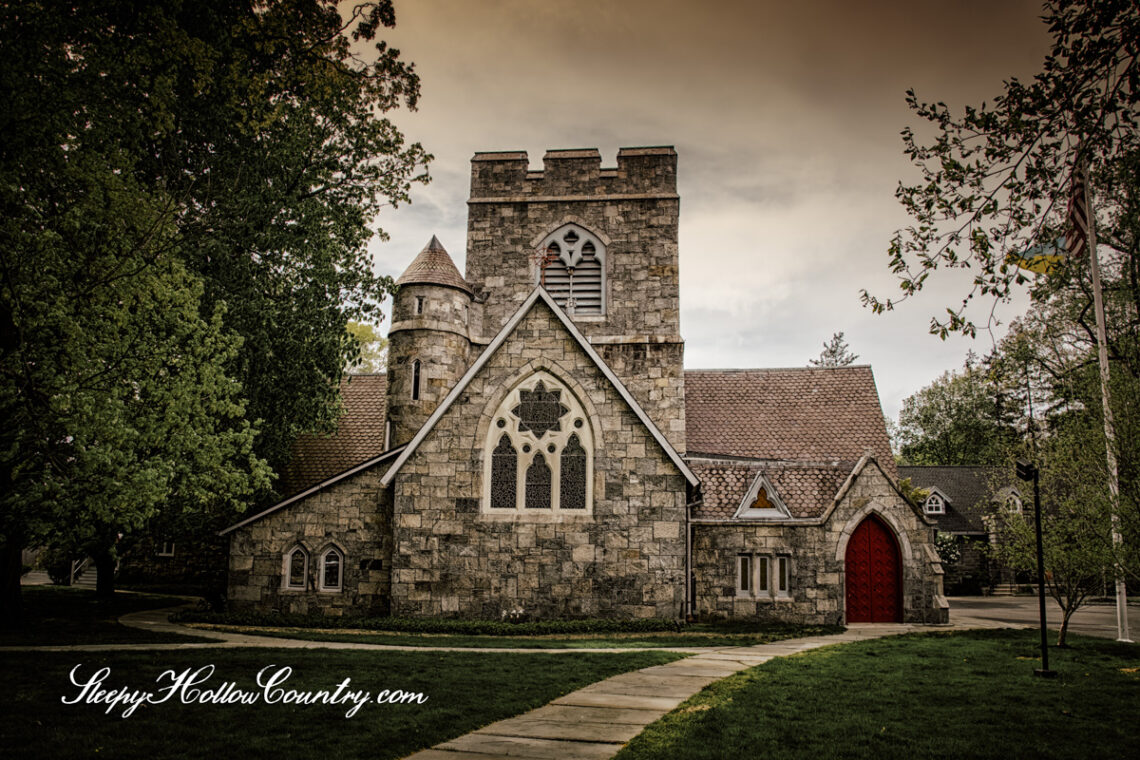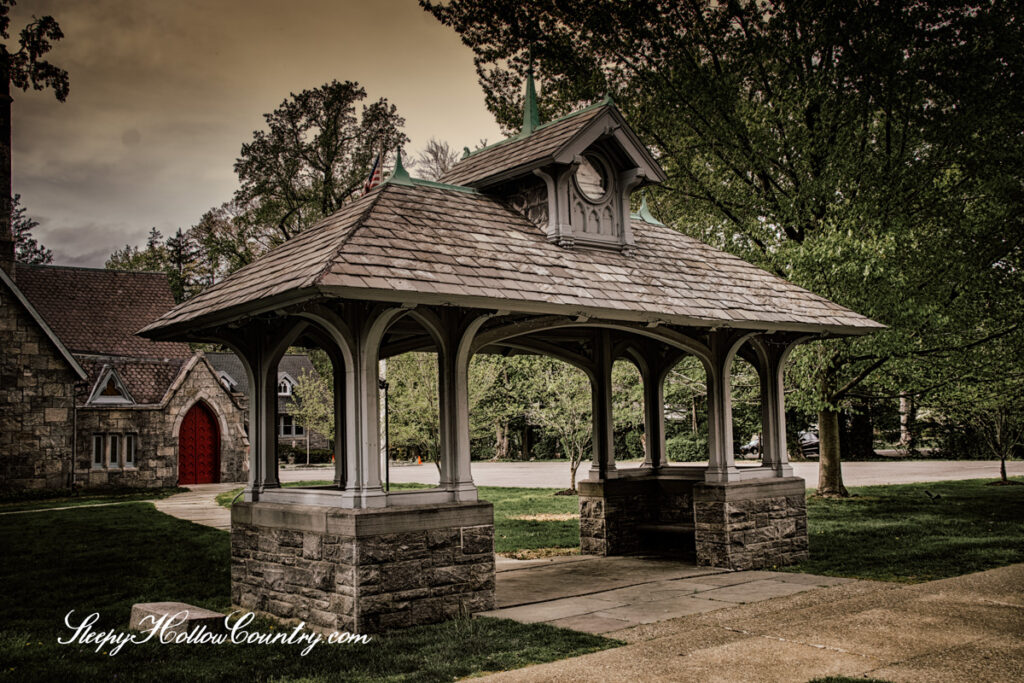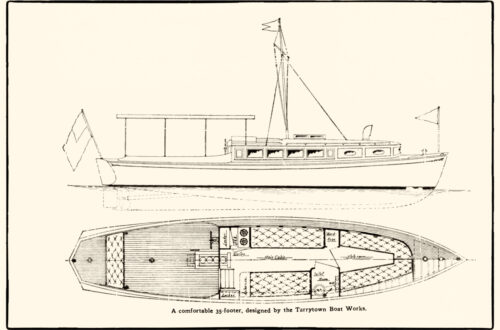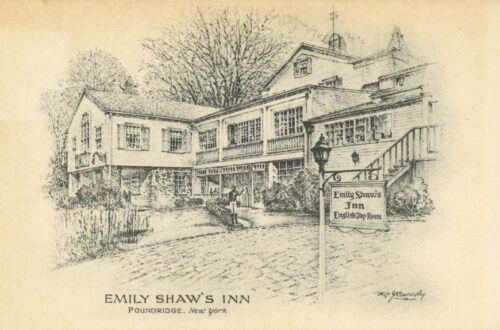
Ghosts of St. Barnabas Church
“Most longtime parishioners at Irvington’s Church of St. Barnabas cheerfully accept the idea that there are ghosts that haunt the venerable Episcopal Church and its Rectory.”
–The Hudson Independent, October 2, 2011.
St. Barnabas Church in Irvington, New York, an Episcopal congregation, traces its history to the mid-1850s when The Reverend John McVickar purchased a 30-acre property north of Main Street for a summer residence. This was in part due to his friendship with author Washington Irving whose own home, Sunnyside, was less than a mile away. Around 1852 McVickar set about improving his property and the spiritual well-being of the community by launching the construction of a chapel and school on a corner of the property bordering the Albany Post Road. His son, Reverend William Augustus McVickar, was named the first pastor.
The congregation outgrew the chapel a decade after its founding. A construction campaign to expand the church added a stone tower, transept, and chancel, creating most of the structure we see today.
You might expect legends to grow up around an institution that has been a pillar of a community as long as this Gothic Revival stone church. Indeed the Church of St. Barnabas is reputedly home to two ghostly figures. Much of what is publicly known about the ghosts comes from an October 2, 2011 article by Barrett Seaman in the local newspaper The Hudson Independent.
Ghost of The Reverend’s Wife
The primary apparition that lingers on this property is that of a female figure in Victorian-era clothing. As reported in The Hudson Independent she was seen regularly around the church rectory in the late late twentieth century during the 36-year tenure of the Reverend Charles Colwell.
Colwell’s wife Judy recounted a time she was sorting old photos in the church archives with her youngest daughter Amanda when the girl paused at a photo of Mary Isabel Benjamin, the wife of former rector Reverend William Henry Benjamin. Amanda exclaimed “That’s her! That’s the woman who sits in the chair in my room at night. But she never says anything.” Mrs. Benjamin had lived in the rectory from 1867 until her husband’s death in 1907.
By all accounts the apparition of Mrs. Benjamin was a benign presence. She would simply sit silently in the corner of the bedroom knitting.
The Watchful Rector of St. Barnabas Church
Music in the Episcopal Church is as essential as liturgy. Around the turn of the millennium the congregation at St. Barnabas saw the need to replace the church organ. They turned to The American Classic Organ Company of Chester, Connecticut for design and installation. After its dedication in 2001 church literature described the instrument as “truly unique in tone and range. It has a romantic sound with color and grandeur very much reminiscent of an English organ, and yet the instrument is not bound by the English conventions of organ building, blending tones that are both eclectic and cohesive, typical of the American tradition.”
It was the installation of this new organ that seemed to invite a second ghostly visitor. In the fading light of an October afternoon, an apparition appeared to one of two workers assembling the instrument. The The Hudson Independent reported “Whether the apparition . . . was that of Reverend Benjamin’s predecessor, Dr. William McVickar, or some other spirit with an interest in St. Barnabas, is unknown. But the spirit’s presence, observing their work from the back of the nave, was enough to cause the two men to leave the church rather hastily.” Westchester Magazine later published a more colorful rendering of the incident: “As one might expect, the hapless workmen fled the spooky scene like proverbial bats out of hell. Do you blame them?”
After the organ incident, there have been no more reports of apparitions at the church or rectory. However, as The Hudson Independent observed, “It cannot be said with certainty whether the spirits have vacated the premises or just slipped back into obscurity.”
The Lych Gate
A construction project from 1899 to 1902 added a parish hall and, at the side of North Broadway, a lych gate built of granite and limestone with a timber roof covered in slate shingles. Traditionally, a lych gate is a roofed gateway to a churchyard, separating the consecrated ground from the unconsecrated. While serving as the main point of entry to a church, a lych gate was also used to shelter a coffin before burial. Seats were often incorporated for mourners keeping vigil. The term “lych” derives from the Saxon word for corpse. Take a seat for a while . . . you never know who—or what—you might see.

Know of a ghost whose story we should tell? Please write us at ghost.editor@sleepyhollowcountry.com.




